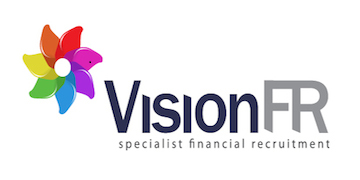VisionFR is a specialist financial and HR recruitment consultancy, owned and run by former CFOs from the marketing and creative sectors. Deborah and Greg Broadbent have first-hand experience of the pleasures and the ongoing challenges of running agencies, and so are well placed to consult with you should you be looking to recruit into your finance or HR teams at any level.
Main Content

When profit growth doesn’t have to stem from new business
Rather than chasing that new piece of business, what if improved margins on existing business could deliver the same profit? DBA Annual Survey Report sponsor, VisionFR takes a look.
 In our previous article for the DBA we discussed when a creative agency might employ its first Finance Director and what shape that might take, for example, full-time versus portfolio/fractional; in-house versus outsourced.
In our previous article for the DBA we discussed when a creative agency might employ its first Finance Director and what shape that might take, for example, full-time versus portfolio/fractional; in-house versus outsourced.
Whichever approach you take, and whatever your business size, having someone with dedicated time to understand the financial dynamics of the business is essential. Someone who can really get “under the bonnet”, contribute to the strategy and help translate that into monthly, annual and longer-term business planning, using appropriate metrics and KPIs to forecast and set goals.
Whilst agencies will often chase top line fee and revenue growth, devoting large amounts of costly time and resources to competitive creative pitches, having a keen eye on client and project profitability of existing business is key in terms of the actual financial benefit to a business.
Let’s take an example, whereby an agency secures a piece of business worth, say, £100k in fees. Assuming a “modest” operating profit margin of 10%, this would return £10k to the agency’s bottom line (pre-tax). Now let’s also assume that the overall agency revenues are £1m, generating a £100k profit at our 10% margin.
If the FD (or senior finance personnel) is able to help improve the overall margin by just 1% to 11%, then the increased profit (£110k instead of £100k), is tantamount to the business winning that £100k piece of new business. And what if we could improve the margin to 15%, more of an industry norm, or even 20%+ which is what the best performing agencies make? Without any margin improvement, the agency would need to increase its revenues by 50-100% to achieve the same level of increased absolute profit.
Of course, it’s very easy to say that, and possibly harder to achieve in practice, but a strong FD can help by:
- reviewing current profitability or utilisation measures,
- examining the resourcing and utilisation by project and client,
- and thereby determining which clients/projects are costing the business money compared to others.
Armed with this knowledge, they can then work with client facing teams to:
- improve projects/clients which are less profitable than others
- help ensure scopes of work are properly budgeted for and adhered to, or negotiate additional fee for out-of-scope work
- agree where additional support, freelance or otherwise, is genuinely needed
- improving processes and systems to aid efficiencies
- negotiate improved terms of business with client procurement – aiding cashflow, ensuring ratecards are appropriate or agreeing value propositions.
Allied to this, your FD will also be improving commercial acumen of your account handlers and their confidence in discussing financial issues directly with clients.
As a business grows and even in times of contraction, having access to a senior Finance Director to ensure the business operates as efficiently and profitably as possible is more of a necessity rather than a luxury. Running an SME business throws up ad hoc issues on a regular basis – things can blind side you, for example issues with suppliers, landlords, cashflow, staff, utilisation, overservicing, potential M&A, taxation, legal matters, insurance claims, bad debts, audit, procurement & general operating efficiencies to name some. In most instances, the Finance Director should more than cover their overhead by improving your profitability from clients or projects and/or also controlling costs and risk.
What you’re aiming for is to combine the generation of new fee income through new business development and dove-tailing this with improved margin performance on existing business; that’s the sweet spot to a thriving business.
